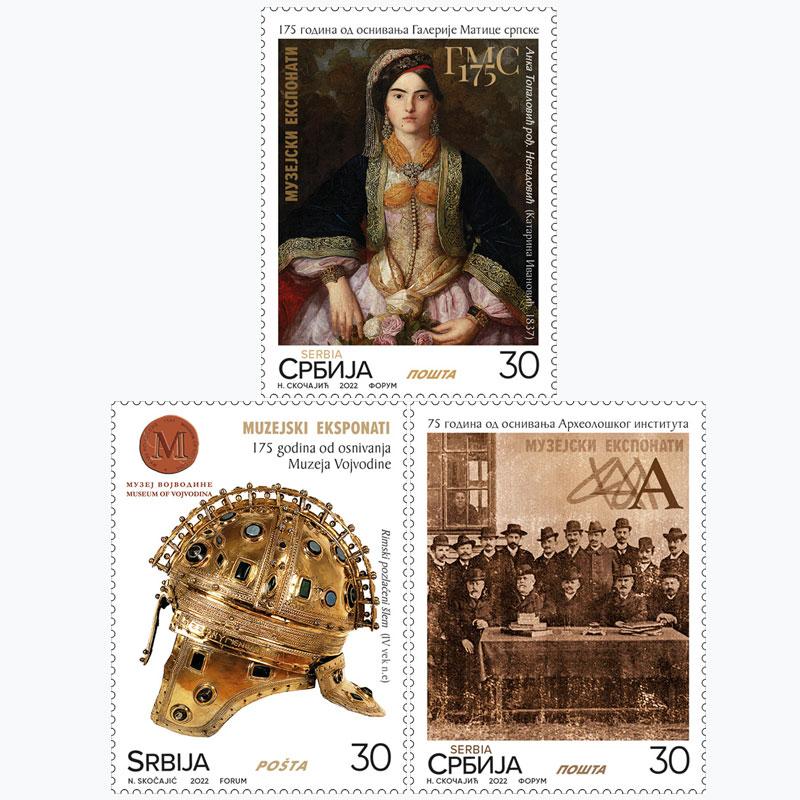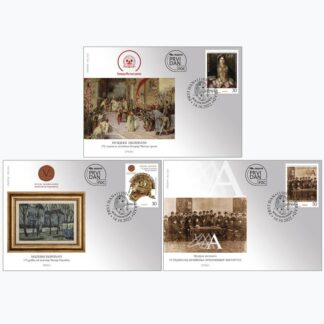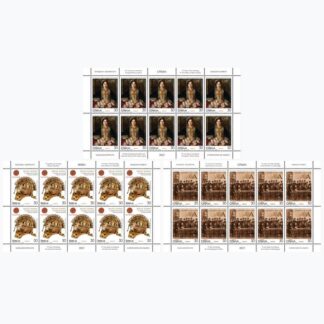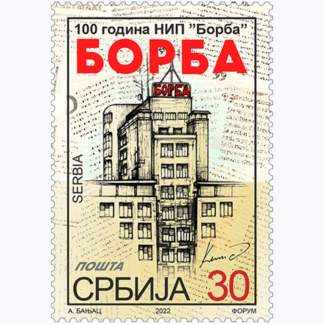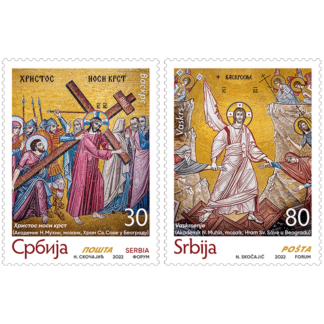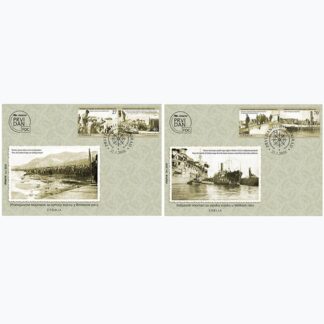Description
175 Years of the Founding of The Gallery of Matica Srpska
The Gallery of Matica Srpska, as the oldest national art museum, is, as it were, a mirror of the state, a sort of stain glass window depicting historic events, showcasing artistic preferences and aspirations of Serbian artists. Likewise, the Gallery protects the memory of its funding members, directors, art collectors, researchers, artists, and particularly that of its benefactors who have inscribed their names in the history-book of the Gallery and Serbian culture in general.
As it was created during the past 175 years, the history of the collection of the Gallery of Matica Srpska is the history of the Serbian people, art, and culture, which reflects all socio-historical, cultural, and artistic changes that Serbian society underwent in a wider geographical area – from the former Austrian and Ottoman Empires, through various forms of state organization of the former Yugoslavia, to the present Republic of Serbia. The collection, primarily oriented towards painting, numbers 10,000 works of art. It is divided into 16 collections and includes outstanding examples of graphics, sculpture, drawings, applied art which highlight the origin, development and achievements of Serbian art and indicate the origins, position and the place of Serbian culture and art in European context.
Our contribution to the culture of remembrance is manifested in our professional approach to the care for the protection of artworks, as well as in the realization of numerous exhibitions and programmes for the audience, especially educational projects for children and young people.
The Gallery of Matica Srpska strives to be the place that acts in the contemporary moment while the sense of belonging to the nation is enhanced by the feelings of respect and pride.
By respecting tradition, we create tradition.
Мотив на марки: Анка Топаловић рођ. Ненадовић (Катарина Ивановић, 1837). Мотив на коверти: Проглашење Душановог законика (Павле Паја Јовановић, око 1930)
Expert collaboration: The Gallery of Matica Srpska
175 Years of the Founding of the Museum of Vojvodina
The roots of the Museum of Vojvodina reach back to 1847, when Matica srpska, then located in Pest, decided to establish the Serbian National Collection or Museum. The first museum collection was created from the legacy of Sava Tekelija, and was presented only after the opening of the Museum of Matica Srpska in 1933. After the Second World War, part of the material was separated from here and by the decision of the provincial authorities on May 30, 1947, the Vojvodina Museum was established as a museum of a complex type, the largest of its kind in Serbia, with collections ranging from archaeology, ethnology, history, art history to zoology, botany, geology, palaeontology and mineralogy.
Из фондова Војвођанског музеја разгранале су се многе установе из заштите културе и природе: Музеј радничког покрета и народне револуције Војводине, Музеј града Новог Сада, Позоришни музеј Војводине, Завод за заштиту споменика културе и Завод за заштиту природе. Историјски музеј Војводине, основан 1956. под називом Музеј радничког покрета и народне револуције, сјединио се са Војвођанским музејом 1992. у установу под називом Музеј Војводине.
Today, it is a modern institution with a rich collection of around 200,000 items and a specialized library, which has regularly published the annual publication “Work of the Museum of Vojvodina” since 1952. It has five permanent exhibitions and five depandans, among which are ethno park “Brvnara” in Bački Jark, Museum Complex in Kulpin and Medical Museum Collection - Pasteur Institute. The main activity of the Museum of Vojvodina is the collection, processing, protection, documentation, presentation and publication of movable cultural assets, as well as supervision of the professional work of 16 museums, galleries and museum collections in the area of Vojvodina.
Motif on the stamp: Roman gilded helmet (4th century AD). Motif on the envelope: Museum of Vojvodina bulding (Bogumil Karlavaris)
Expert collaboration: Museum of Vojvodina, Novi Sad
75 years since the founding of the Institute of Archaeology
Археолошки институт основан је 1947. године у Београду и за првог управника именован је проф. Владимир Петковић. Један од циљева који је након формирања постављен, јесте дефинисање планова рада у којима је истакнуто проучавање процеса развитка људске цивилизације на основу археолошке грађе на територији Србије и у њеном окружењу. Од оснивања до данас установа је реализовала низ великих истраживања археолошких налазишта, различите форме и обима, као и спровођење заштите материјалних културних добара. Многобројни локалитети који се хронолошки опредeљују од праисторије, антике и средњег века, све до турског периода били су предмет теренских систематских радова научних сарадника Института. Једна од примарних мисија Археолошког института је и развој друштвених и хуманистичких наука, са основним тежиштем на пољу дефинисања прошлости, објављивању научних резултата али и популаризацији културног наслеђа. Рад Института у новије време нарочито одликује плодоносна сарадња са установама и колегама из земље и иностранства, што се одражава кроз увођење и примену савремених научних метода у истраживачкој пракси. Проучавањем материјалних остатака уз имплементацију савремених научних приступа добијају се резултати који нам омогућавају да јасније реконструишемо начин живота, културу, уметност и домете човековог мишљења на простору Србије током векова, што данас представља најважнију научну делатност Археолошког института у Београду.
Expert collaboration: Institute of Archaeology, Belgrade
Graphic realization of the issue: Nadežda Skočajić, academic graphic designer
